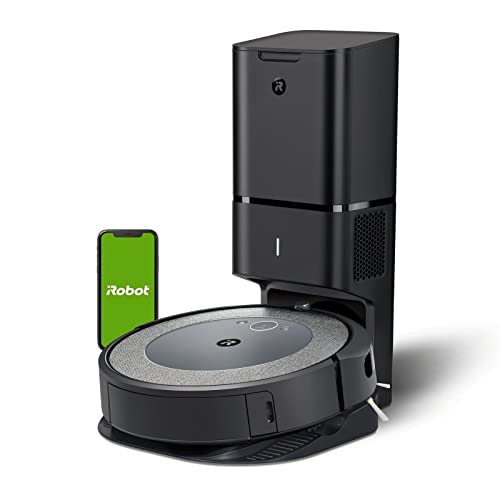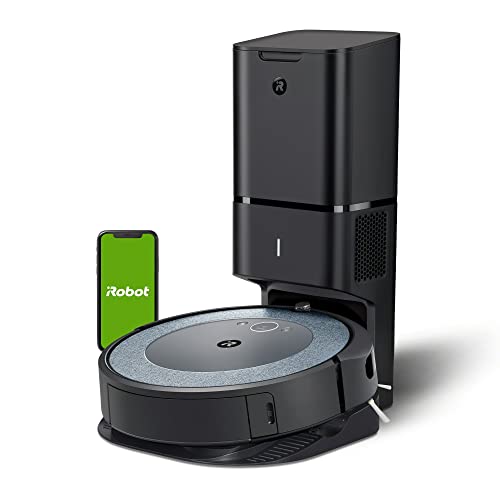30 Inspirational Quotes On Self Emptying Vacuum
페이지 정보
작성자 Aida Rhoden 댓글 0건 조회 34회 작성일 24-04-18 19:45본문
 What Is a Self-Emptying Robot Vacuum?
What Is a Self-Emptying Robot Vacuum?Many robot vacuums have a built-in bin that must be manually emptied at the end of each cleaning cycle. Self-emptying bases are a premium feature that adds value to the robotic cleaner.
Are they worth the ongoing cost? This review takes a closer look at the Shark EZ robot vacuum and its self-emptying base.
What is self-emptying?
Self-emptying robot vacuums are a type of robot cleaner that has an internal storage system, usually in the form of a dustbin that automatically empties when it gets full. This means that you don't have to manually empty the dustbin after every cleaning cycle and decreases the amount of time you have to spend on maintenance. You can determine the time when the bin is full using a window. These features are available on models by iRobot Ecovacs and Shark.
The technology is relatively new and is a desirable feature on a lot of robot vacuums. However, a few models can provide this capability at a lower costs than you might expect given their advanced capabilities. Shark RV912S EZ Robot Vacuum is one example. It is one of the best-rated self-emptying robot vacuums that you can purchase for less than $400.
Most robot vacuums come with dustbins that are filled after a few cleaning sessions and require manual emptying prior to the next cleaning cycle. This can be a tedious process, particularly for families that have a lot of pet hair and allergens that build up quickly. Cleaning a robotic vacuum can be also messy, since you might have to touch the dirty items and be at risk of releasing irritating substances into the air.
Self-emptying eliminates both problems by allowing the robots to automatically move dirt and debris out of their dustbins into an enclosed, larger storage area. This is usually located inside the base station, and can be easily removed and emptied when required. They can also filter dust particles, capturing them and being a boon to allergy sufferers.
Another benefit of the self-emptying system is that it's less abrasive than the majority of robot vacuums even when emptying the container. The transfer of debris can be loud. This isn't an issue for the majority of people but it can be alarming for pets or small children.
The most effective self-emptying robots have a host of other useful features, such as Wi-Fi and smart home connectivity so you can control them using your smartphone or other connected devices, automatic/set run times and a mapping feature, mop/vacuum switching options, and more.
How does an automatic vacuum cleaner work?
A typical robot vacuum utilizes an internal storage system, usually a small dustbin. It will need to be emptied frequently, depending on your home's size and how filthy your floors are. This problem can be eliminated by incorporating a self-emptying function to the robot vacuum. It will return to its base and empty the bin onboard into a separate dust bin. This is also referred to as Clean Base Dirt disposal (iRobot) or Auto Empty Stations (Ecovacs) or self emptying robot vacuum for pets-Emptying Bases (Shark).
Many models of robot vacuums that have this feature are also fitted with a separate dock that can be used to mop so that the machine is able to double-duty in your home. There are even different modes for vacuuming and mopping, allowing you to have the exact cleaning style you want.
It's important to keep in mind that, while these features may be beneficial, they add a significant amount of cost to the robot vacuum, so they aren't an option for all. These features also add additional steps to the process of using and setting up a robot vacuum, which could be off-putting for some consumers.
Shark RV912S EZ Robot Vacuum Self-emptying robot vacuum that is still reasonably priced in comparison to other robot vacuums. This particular model comes with powerful suction, 3D light scanning, and precise object recognition, so it can tackle just about anything on your floors. Its massive base can hold up to 60 days of debris and returns to its charging station to re-fill itself once it is full.
It's not clear how loud a robot which can empty itself can be. While there are sometimes settings available to control the power of the device however, the process of emptying can last for a few minutes or so and may be quite loud. For this reason, some people find the noise to be a drawback of these devices.
How often should a vacuum that self-empties be cleaned?
Self-emptying models work exactly like regular robot vacuums. They sweep your floors to remove dust, hair and crumbs, then return to their charging base. Contrary to conventional robots some models that self clean have docking stations that double as disposal units that automatically empty the robotic cleaner's trash bin into a larger storage bin once it's full. This means you don't have to deal with manually emptying the half-liter bin after each use and risk overfilling it and causing a clog.
The docking system of self-emptying robots can store dirt for up to 60 days before it has to be removed. This means they have to be emptied less often than regular robots. It is important to keep in mind that the transfer process is noisy and can startle nearby pets or people who are around them, so this feature may not be ideal for households with a sensitive ear.
You should continue to empty the robot's dustbin and clean its filter to avoid clogs, which will affect its performance. You should also examine the power button of the robot to make sure it's connected and charged prior to every use.
Are self-emptying vacuums really worth the cost?
Many robot vacuums come with self-emptying bins that eliminate the requirement for you to manually empty the bin after every cleaning session. These devices are more expensive than traditional vacuums, but they can save you time and effort by not having to empty your robot's trash bin after every sweeping.
While a self-emptying robot vacuum might seem like an expensive item, it could be a valuable investment when you live in a busy home or have pets that shed. You might also want to consider it if have allergies that are persistent or reside in an area that is dusty.
Self-emptying vacuums work by docking with a larger base station, which has an hose that is used to move the particles from the robot's trash bin into the larger receptacle. This prevents the dust bin from overflowing or getting blocked and self-emptying robot vacuum causing the vacuum to lose suction or smell. In most cases, you'll need to empty the bin every 30 or 60 days, depending on the frequency you use the device.
Most self-emptying robot vacuums can connect to Wi-Fi. This makes it easy to control them from your smartphone. Many models are compatible with Amazon Alexa or Google Home. This lets you control them with voice commands. This is particularly useful for those who are on a strict schedule or have a busy household which makes it easier to keep your home clean even when you're busy.
The majority of bagless self-emptying robot vacuum robot vacuums have an efficient motor for vacuuming that can easily pick up pet fur, dust, crumbs and other debris that can be found on hardwood floors and low pile carpeting. They can be programmed to clean and vacuum in a scheduled manner, which will simplify your life.
The iRobot j7+ is the best robot vacuum that can self-empty, mapping, creating virtual borders and detecting obstacles. This powerful robot vacuum is sure to please. Shark IQ XL offers many of these features at less cost.

댓글목록
등록된 댓글이 없습니다.